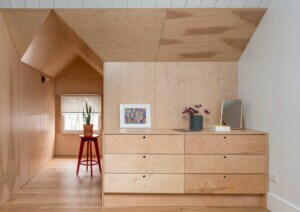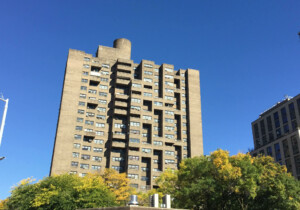From October to December last year, the Metropolitan Museum of Art hosted a three-part lecture series, Designing Tomorrow’s Met, presenting ambitious architectural and curatorial overhauls of the museum led by three architects. Over the next ten years, these efforts, with a combined budget of over $600 million, will transform, renew, and recontextualize one quarter of the Met’s galleries.
“[The new galleries] will present art in a better way: They will tell new stories, new narratives. They will also create new spatial surroundings for our visitors and for our experience with art,” said Max Hollein, the Met’s director since 2018, in the kick-off to the series. Leading these transformations are Frida Escobedo, Nader Tehrani of NADAAA, and Kulapat Yantrasast of WHY.
In a time when museums are coming to terms with their pasts and actively decolonizing their practices of collecting, exhibiting, and interpreting art, it means a great deal that none of the chosen architects are white males. Global diversity was also a distinguishing factor: The three architects hail from Mexico, Iran, and Thailand, respectively. Altogether, their unique perspectives reflect the cultural pluralism of the 21st century, and it will be exciting to see their visions unfold. The lecture series marks the Met’s first public presentation of its anticipated transformations and appears to be a response to demands for a more open community dialogue.

Since its construction in 1880, the Met has undergone numerous rounds of architectural transformation, ranging from the Richard Morris Hunt wing in 1902 to a 26-year long-engagement with Kevin Roche that enlarged the building’s footprint by more than one million square feet. More recently, a 2007 renovation of the plaza was made possible by a $65 million gift from former trustee David H. Koch, a donation that was met with protests by climate activists who opposed the Met’s acceptance of this patronage. In this way, “the Met is not just a building but a collection of buildings put together almost as a piece of urbanism,” as Tehrani aptly remarked in his lecture.
The Met’s modern and contemporary wing is the primary focus of this current round of renovations. Plans to expand it had been in the works ever since the department was established in 1967. In 2015, after a competition, David Chipperfield Architects was commissioned to demolish the existing wing and build a new one. But the pandemic and budget deficits at the museum put it on hold. The fate of the modern wing was finally sealed in November 2021 with the largest capital gift in the institution’s history ($125 million) from longtime trustee Oscar L. Tang and his wife Agnes Hsu-Tang.
Chipperfield’s office, along with Ensamble Studio, Lacaton & Vassal, SO – IL, and Escobedo were invited to present new proposals for the modern wing. In March 2022, Escobedo was chosen to lead the $500 million transformation of the new 80,000-square-foot Oscar L. Tang and Agnes Hsu Tang modern and contemporary wing.
With this announcement, the museum’s transparency was called into question. Chipperfield, this year’s Pritzker Prize winner, told The New York Times he was “blindsided” by the news of his replacement, having not been informed of the decision beforehand.

Escobedo, who spoke first in the series, has a relatively small but distinguished portfolio of built works, including the 2018 Serpentine Pavilion. Once her scheme is completed, she will be the first woman and youngest architect to design a wing in the Met’s 153-year history. She concluded her talk with a quote from Nobel Prize–winning Mexican poet Octavio Paz: “An edifice of time, what was, what will be, what is.” It was unclear what “will be” of the new gallery, however: Having just begun the conceptual phase, Escobedo made no mention of a design direction. It was implied that visitors can expect a similar poetic dialogue between time, permanence, and the public—consistent tensions in her architectural practice—in what will be proposed.
Tehrani, who leads the Boston-based practice NADAAA, presented at the second event. With the conceptual and schematic design phases already complete, Tehrani’s team, which includes Moody Nolan, is well underway on its $14 million, 15,000-square-foot renovation of the Met’s galleries for Ancient Near Eastern and Cypriot Art. Tehrani’s mastery of the “catalytic detail” is the conceptual framework of this re-envisioned wing, slated to open in 2025. Renderings and visualizations demonstrated how the new gallery will play with “chroma and materiality” and include ceramic, copper, brick, gold, and a palette of enchanting blues that connect to the Mediterranean cultures exhibited. Another strategy Tehrani employs is an innovative, undulating ceiling which will connect the multiple galleries through the larger urban-scale footprint of the Met. In doing so, Tehrani’s vision resists the white-box neutrality of contemporary museum architecture, which curator Kim Benzel argued in the closing remarks is “a tool of colonialism and cultural erasure.”
To conclude the series, Yantrasast, cofounder and creative director of the Los Angeles–based WHY architecture, outlined his team’s approach to the Michael C. Rockefeller Wing for Sub-Saharan African Art, Ancient American Art, and Oceanic Art, also slated to open in 2025. Yantrasast described the reimagined wing as “a site of cultural empathy” revealing a bright and uplifting series of galleries with diffused light flooding in from Roche’s glass curtain wall. The existing space, however, posed a number of structural limitations, among them inappropriate natural lighting, light sensitivity of the artifacts, and leaking and condensation from the glass panels. To address these issues, Yantrasast proposed a full replacement of the sloped glazing on the south facade and has partnered with Beyer Blinder Belle to undertake this work. In the closing conversation, the Met’s curator Alisa La Gamma highlighted the capacity for the updated space to “confront the unfamiliar and connect with it in a deeply personal way.”
Seen together with NADAAA and WHY’s ongoing work, what does Escobedo’s recent appointment communicate to the world about the state of arts and cultural institutions? Clearly, identity matters as much as donors. Tang, who supplied the landmark donation, stressed in a recent interview the need “for all humanity to be expressed in the global interpretation of modern and contemporary art.”

Escobedo’s presentation and its delivery over the next ten years will be under tremendous scrutiny. When asked about the renovation in a recent interview on Friedman Benda Gallery’s Design in Dialogue series, Escobedo confidently asserted she’s excited by this early stage of the project. “It’s a good time to listen and be open to all the possibilities.” It’s evident that Escobedo’s studio is staking out its claim to expertise with arts and cultural commissions: Another project, underway with Handel Architects, is Ray Harlem, the high-rise, mixed-use development funded by Russian arts patron–turned–real estate developer Dasha Zhukova, the former wife of oligarch Roman Abramovich. It is anticipated to open in late 2024.
Arts and cultural institutions are living sites of memory. They create narratives of the past informed by the present. The architect’s ability to mediate between the two is crucial. If you visit Escobedo’s website, you will find her portfolio divided into two categories—permanent and temporary. It is safe to say Escobedo’s groundbreaking appointment has already catalyzed much-needed dialogue about the Met’s accountability to its various publics—both local and global, past and present. However, with no opportunity for audience participation, Designing Tomorrow’s Met was more akin to a well-curated series of monologues. As these new additions to the museum are unveiled, the Met’s choices—and how they choose to communicate them—matter more than ever. We are taking note.
Malika Leiper is a Cambodian-American writer with a background in urban planning and creative writing currently working on a memoir about her mother, the exiled opposition leader Mu Sochua.











